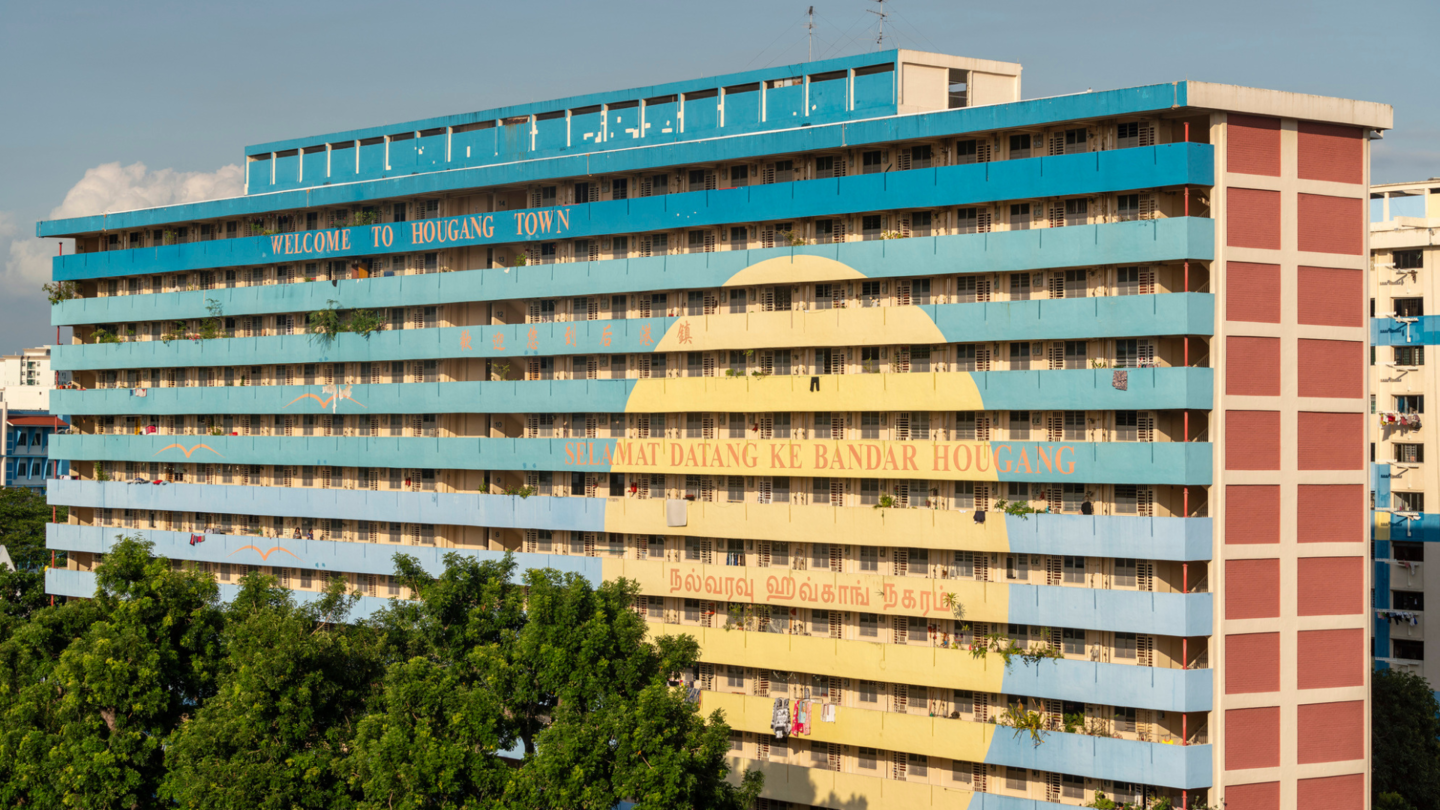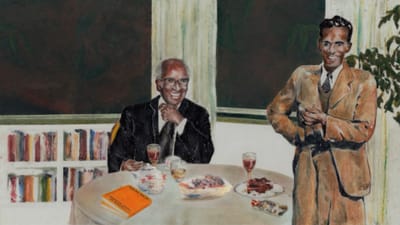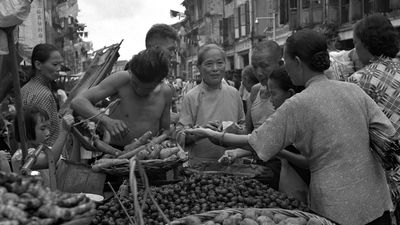On a hot weekend afternoon in May 2006, a Hougang resident spat on a politician from the ruling People’s Action Party (PAP). Maybe.
On that day, the tension in the air was palpable at the Hougang Avenue 7 market; a restless low murmur, an animated gesture, the occasional exclamation. The focus of the 2006 general election (GE) was the lack of estate upgrading in the only two opposition-controlled wards. Low Thia Khiang of the Workers’ Party (WP) had been Hougang’s member of Parliament (MP) since 1991 and Chiam See Tong of the Singapore Democratic Alliance had represented Potong Pasir, with different parties, since 1984. Almost as punishment for having rejected it at the ballot box, the PAP had deliberately and controversially pushed those districts down the pecking order for estate upgrades. These residents would have laughed if told they were living in a “first world country”.
The 2006 GE was Lee Hsien Loong’s first as prime minister. He wanted every elected seat in Parliament, something the PAP had not achieved since 1981. In a bid to lure voters, Goh Chok Tong, his predecessor and then senior minister, had dangled upgrades worth S$100 million and S$80 million to the residents of Hougang and Potong Pasir, respectively, should they return the PAP to power. New lifts, fresh coats of paint, better sidewalks—for Singaporeans fed the idea of property as prosperity, this was likely one offer they could not refuse.
Armed with smiles and flyers, Eric Low, the PAP’s candidate for Hougang, chatted with a group of residents outside the market. Before he could finish his conversation—presumably about the upgrading—an old lady stopped him, told him to wait there and ran up the staircase nearby. A minute or so later, she popped her head out of the block, four stories up, and shouted at the PAP team below, in Teochew: “Take your lift upgrade and go and die!” A glob of spit followed. The PAP once again lost both seats.
Various versions of this tale are told around Hougang. In one, the old lady was a middle-aged uncle; in another, he/she wasn’t even down at the market and merely shouted from the corridor above; in yet another, there was no spitting involved, only a scolding and a middle finger. We will never know what, if anything, really happened. Camera phones were still a rarity then. The market and many of the surrounding blocks were also demolished in 2008, and replaced with a swanky new HDB commercial-residential complex 15 years later, making it almost impossible to track down first-hand witnesses. Always, the tale’s narrator claims to have heard it from someone else.
The persistence of this apocryphal story, its memory so vivid nearly two decades on, captures the peculiarity that is Hougang. Why would tens of thousands of people forego a windfall? Why would they reject uniformity and conformity when these very elements are touted as some of the key ingredients in our success? Why would they wish to stand out in a country where towns and neighbourhoods often meld into one another?
Google “Hougang Spirit”, and you’ll find an array of results, from news articles covering various GEs to HardwareZone forum threads to studies from as far back as 2011, all hailing the togetherness and communal spirit of its residents. Searching for the “Bishan Spirit”, on the other hand, opens a portal into the supernatural, while “Clementi Spirit” throws up invitations to explore the intoxicants available in the neighbourhood. “MacPherson Spirit” does get a few hits, but it’s a campaign label manufactured by the People’s Association. In contrast, Hougang Spirit appears to have organic origins, first translated from “后港精神” to describe the WP’s 2011 electoral victory in Aljunied GRC.
While it may have entered the vernacular recently, and even though the word Hougang itself first appeared on Singapore maps only in the 1970s, the Hougang Spirit actually owes its origins to the urban-rural divide in colonial Singapore, as well as post-independence resettlement policies that saw many erstwhile kampungs consolidated into the same estate. Even today, former kampung residents stay within shouting distance of each other. They share stories of a life that may no longer exist but whose spirit continues to animate the community, to which my family belongs.
In the 1800s, Singapore comprised two distinct worlds. The southern and central regions bustled with activities related to the increasingly busy port, while the rural areas—effectively everywhere else—were dominated by plantations: gambier, and then pepper and rubber. Major arteries branched out from the business district towards settlements in the island’s corners before splitting and spreading further into the kampungs. For the north-east, the arterial road was Serangoon Road, which led all the way to Punggol Point, with branches into kampungs in Yio Chu Kang and Punggol. On rainy days, certain roads would be impossible to navigate; even on clear ones, the business district was a bone-rattling five-hour journey by bullock cart. Plantation workers thus spent the vast majority of their time in and around the north-east itself. Attap settlements sprang up, forming many of the first kampungs there. Shops, usually around the milestones which marked the major roads, followed—to serve the kampung inhabitants, and presumably, any wayfarer who decided to brave the journey north-east. In time, these shops and their owners would become part of the tightly knit communities that characterised the area.
Between the mid-1800s and mid-1900s, Singapore’s population grew from just over 52,000 to nearly 1m. Most new migrants settled around the southern business district and its fringes. Things were, to put it mildly, cramped. A 1947 British Housing Committee report indicated that 72 percent of people lived in the city-centre’s 80 sq km; the rest were spread out over 498 sq kms—a stark contrast to the evenly-spread population today. The report was damning in its assessment of Singapore’s housing conditions in the post-war era, calling it “one of the world’s worst slums” and “a disgrace to civilised community”.
From the time they arrived on these shores in 1819, the colonial authorities had been reluctant to spend on any public works. The Singapore Improvement Trust (SIT, precursor to the HDB), was belatedly established in 1927 to manage urban planning, including public housing. But the island’s breakneck growth meant slums and utterly squalid quarters continued to outpace the SIT’s efforts. To address this issue, HDB was set up in 1960, by which time the population had swelled to around 1.7m. Lim Kim San, Singapore’s first minister for national development, was appalled at the wretched living conditions: “Underneath the staircase was a single plank. A man was lying on the plank. He had rented it. That was his home!” Harry Potter without the magic. Lim also highlighted a case of brothers so poor that they had to share a pair of pants. This meant that the pants-less one had to stay at home under the blanket in Singapore’s heat while the other was at work—not quite the brotherhood of travelling pants.





